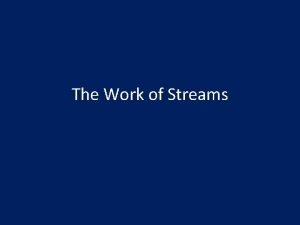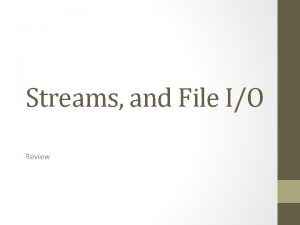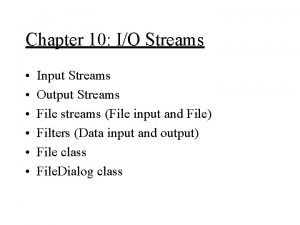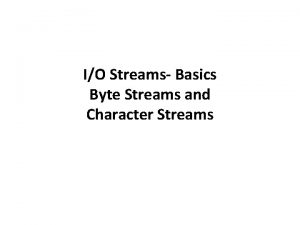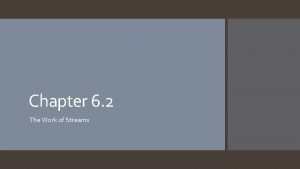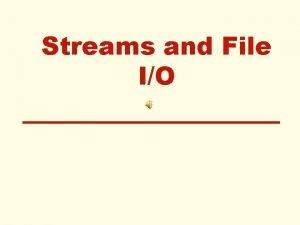The Work of Streams Introduction Streams are l











- Slides: 11

The Work of Streams

Introduction Ø Streams are: l Channels of Erosion l Transporters of Sediment l Creators of features

Erosion Ø Streams erode their channels by lifting loose particles by: l l l Abrasion Grinding Dissolving The faster the current of a stream, the more erosion takes place.

Sediment Transport Ø Streams transport sediment in three ways: l l l In solution (dissolved load) In suspension (suspended load) Scooting or rolling along the bottom (bed load)

Load Types Dissolved load: Particles tiny enough to be dissolved in the water (dust, particles of sand, etc) Ø Suspended Load: Particles that are small enough to get carried by the current downstream. Ø Bed Load: Solid material that is too large to get carried by the current. These tend to roll along the bottom of a stream in the same direction as the current. Ø

Deposition Ø Deposition occurs as streamflow drops below the critical settling velocity of a certain particle size. l l TRANSLATION? The stream slows down and particles drop out! Alluvium: The material that is dropped out of a stream.

Deposition – continued! Ø Deltas: An accumulation of sediment formed where a stream or river enters a lake or ocean.

Deposition - Continued Ø Natural Levees – a “wall” that forms along the banks of a flat river that floods repeatedly. The natural levee can protect the land from future flooding.

Stream Valleys Ø Narrow Valleys l l l V-shaped Formed from Downcutting. Rapids and Waterfalls found in this type. Ø Wide Valleys l l l Formed from erosion on the side of the stream channel. Has a flat valley next to it called the floodplain. Move in meanders: • Erodes the outside of the bends and deposits on the inside.

Floods Ø A flood occurs when the discharge of a stream becomes so great that it overflows its banks. Ø Most are caused by rapid snow melts or storms with heavy rain.

How do we control flooding? Ø Artificial Levees – mounds of earth built on the side of a river. Ø Flood Control Dams – smaller dams built across streams that can be opened or closed to control stream flow. Ø Limiting Development – Planning is done to avoid building on floodplains.











